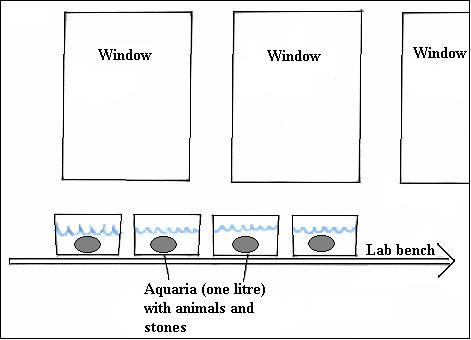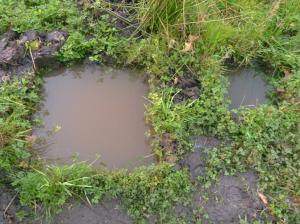Materials & Methods
Cafeteria Experiment

The predators used in the experiments were caught in the wetland Ekängdalgången (SWEREF99 TM:6468991, 538632). They were kept together in 21-24 °C on laboratory in water from the wetland Ekängdalgången before the experiment. For 24 h they had access to a surplus of the prey used in the experiment. After that they were separated and each predator was put in a 1 L aquarium with 1 L of filtered wetland water and with a stone on the bottom, still in room temperature (see figure above). The aquaria were covered with lids made of plastic net. The predators were starved and allowed to acclimatise to their aquaria for 36 hours before the experiment began. That was to maintain a standardised hunger level. Then the prey was added to the aquaria with predators or to the controls to which they had randomly been assigned. After 3, 6, 9, 12, 24, 36, 48, 60 and 84 hours the number alive of each prey type in each aquarium was noted. The time intervals were shorter at the start when the predators were extra hungry. Several prey choice studies count consumed animals after 24 hours. The cafeteria experiments were conducted between 27 June and 21 August.
The predators’ consumption of the different prey types was compared separately for each predator species and the predators’ consumption was compared separately for each prey type. Searches for significant differences were done with Kruskal-Wallis test and Nemenyi-test.
Immigration Experiment

The puddles were dug between 23 May and 2 June in pairs of one large and one small (see figure above) about five meters from the wetland Ekängdalgången. There were nine replicates with five meters in between. When the predators immigrated they were able to choose between the two puddle sizes. The predators were caught with activity traps every second or third day between 3 September and 5 October. The traps were left in the puddles for 24 hours. The number of each species was noted and compared between the puddle sizes. Statistics were done with a t-test in Excel.
Responsible for this page:
Director of undergraduate studies Biology
Last updated:
12/12/13
